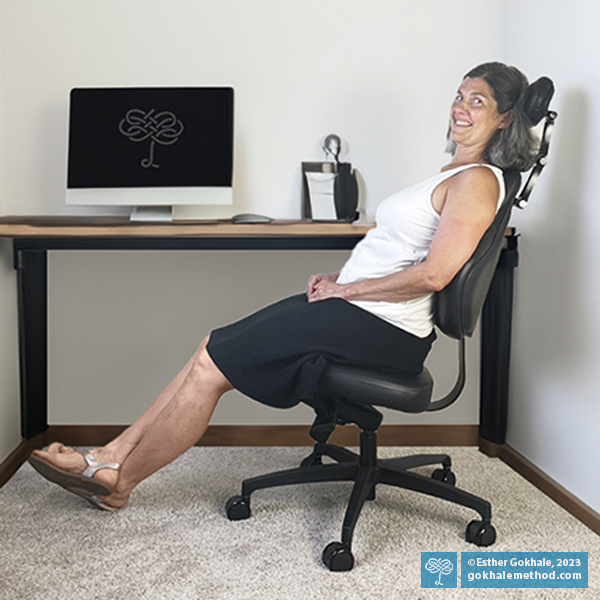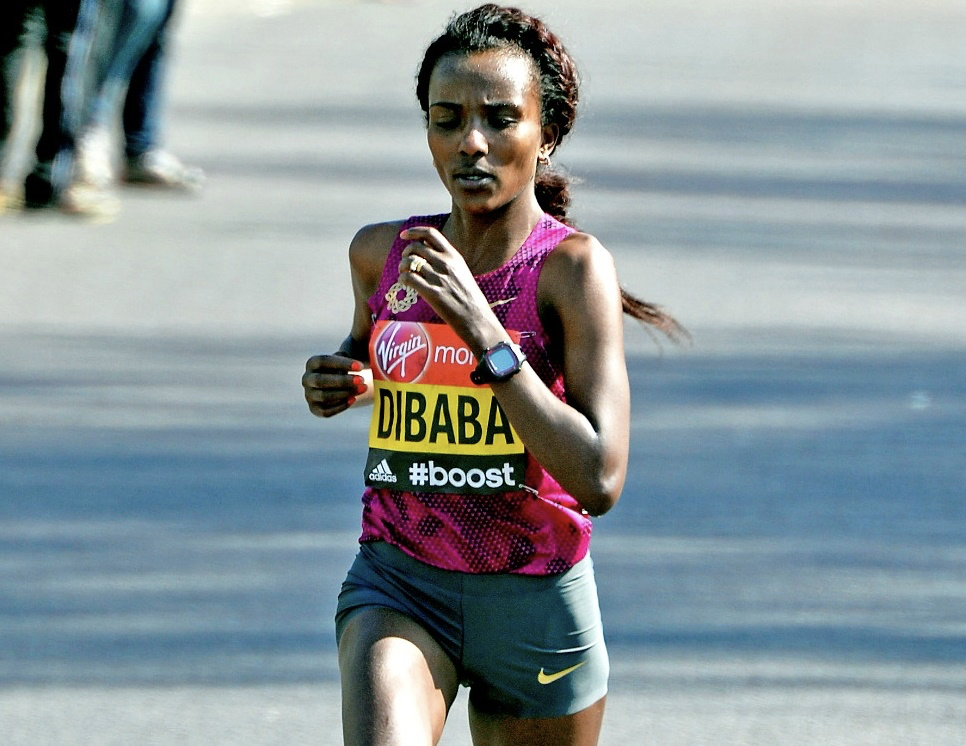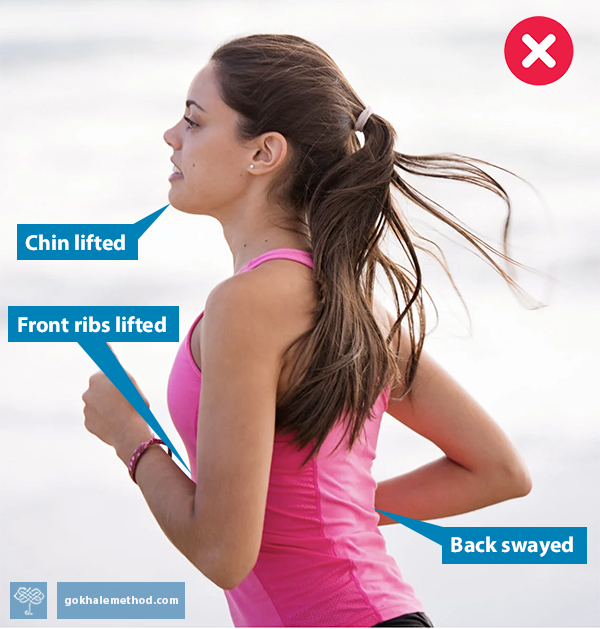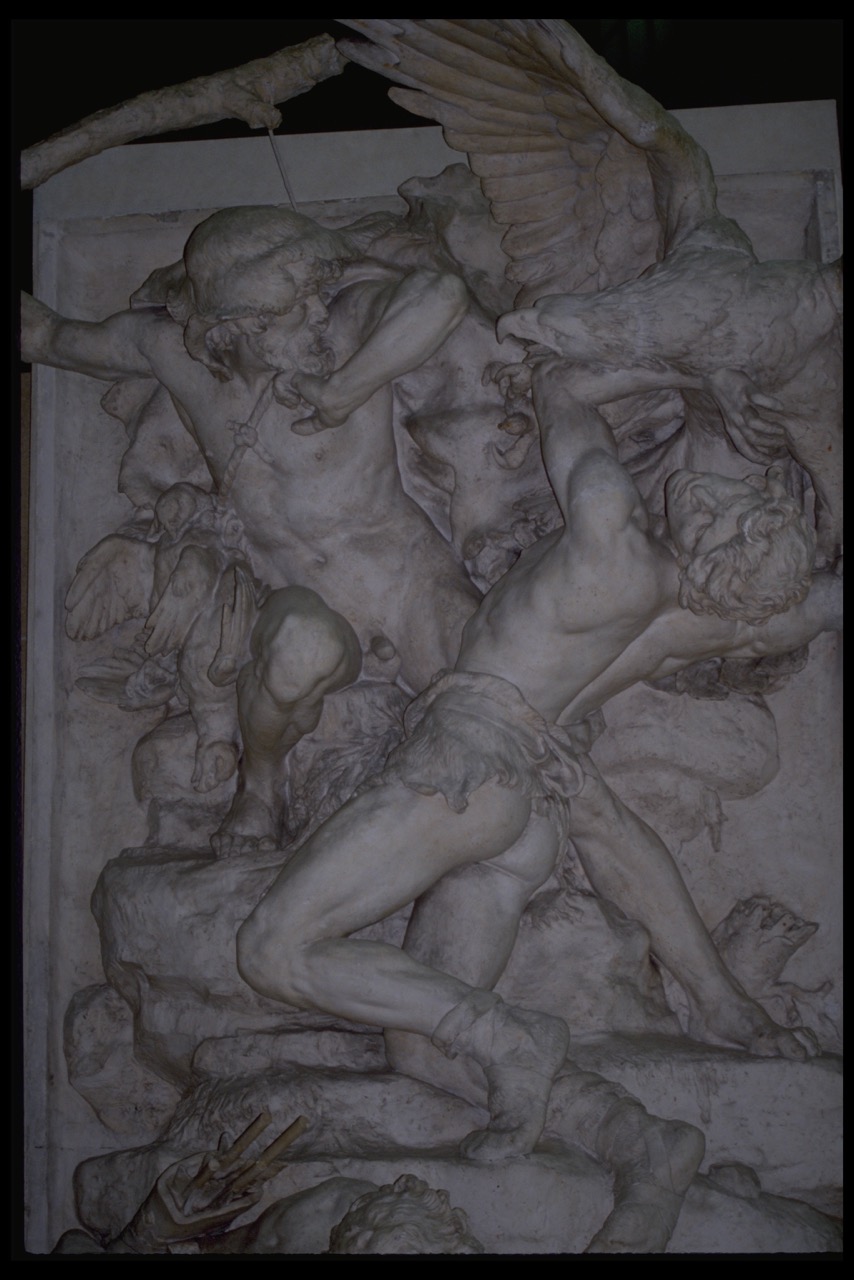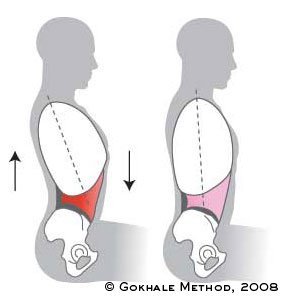There’s no doubt that dysfunction abounds when it comes to sitting. Most of us spend many hours on poorly designed chairs, in poor posture. As many people know all too well, poor sitting habits can definitely set you up for chronic back pain and tension.
The good news? With just a little time and awareness, we can learn to sit well. There is real beauty and functionality in sitting done skilfully! When you do, sitting becomes not only comfortable, but also healthful and therapeutic.
Helping Hands for Healthy Posture: Tall Neck
Most of us are familiar with the idea of self massage. For many it may grow from instinctively rubbing a sore spot. For a few it grows into an essential healing art, and may even incorporate skills such as trigger point work, myofascial release, and acupressure.
Ronald Katz’s Gokhale (Gō-clay) Method® Success Story
Before I settle in to recount my back pain story, let me fetch my Gokhale Pain-Free™Chair. This is the chair I now use for all my writing, and that’s important, as I am an author of mystery short stories, and spend many hours composing at my desk. Pain-free, I’m now glad to say.
Gliderunning: Part 6: Upper Body
Welcome to the sixth blog post in our series on running. My name is Michelle Ball, and I am a Gokhale Method® teacher living in Tasmania. I am also a lifelong runner and am passionate about sharing the benefits of healthy posture with the running community, be that beginners, seasoned runners, or anyone in between. Even if you walk rather than run, the posture principles outlined in this post can still help you to enjoy an active and pain-free body well into old age.
Running with a well-positioned upper body
In this post we will consider the upper body. Runners are inclined to pay far less attention to the upper half of the body than the lower half, as they focus on gait pattern, cadence, footwork, and propulsion. This is hardly surprising, but the lower body, while super-busy, really is just half the story.
Healthy posture in the upper body brings the following benefits:
Protected spinal structures
Improved biomechanics
Unimpeded flow and momentum
Support that makes the body feel lighter
Athletic appearance
Gliderunning: Part 5: Anteverted Pelvis
Welcome to the fifth blog post in our series on running. My name is Michelle Ball, and I am a Gokhale Method® teacher living in Tasmania. I am also a lifelong runner and am passionate about sharing the benefits of healthy posture with the running community, be that beginners, seasoned runners, or anyone in between. Even if you don’t run, but do want an active and pain-free body well into old age, this blog post is for you!
What is an anteverted pelvis?
Pelvis refers to the bony pelvis, and means basin, or bowl, in Latin. Anteverted means tipped, turned, or inclined forward, from the Latin ante to go before or in front, and vertere to turn. So we are referring to a pelvis that tips forward.
In Yoga: Bend Back, Don’t Swayback!
Not all backbends are created equal. Healthy backbends happens at the lowest lumbar level (L5-S1); unhealthy backbends happen higher up in the lumbar spine.
How to Not Sway Your Back in the Shower
As your mother always said, practice makes perfect. Luckily, every day you are presented with countless opportunities to perfect your posture while sitting, walking, sleeping and...showering.
Yes, that’s right. You can, and should, be aware of your posture even while performing the most mundane of tasks. So before your next shower, take a few meditative minutes to enjoy the healing properties of warm water...and then pause before you grab your shampoo bottle. Why? Because the half-minute you spend lathering your hair is probably the most vulnerable shower-time for your back.
Fixing a Sway Back
Though a sway back is commonly perceived as good posture, most people recognize it to be a problem. What is the best way to fix a sway? And for those of you who don’t quite know, what is a sway?
A swayback is an inappropriate curve usually in the upper lumbar spine. It is frequently the result of trying to “sit up straight,” or “stand up straight” in a sustained way. Sometimes it is the result of modern activities, most notably women’s gymnastics, women’s ice-skating, women’s ballet and misguided forms of yoga.

